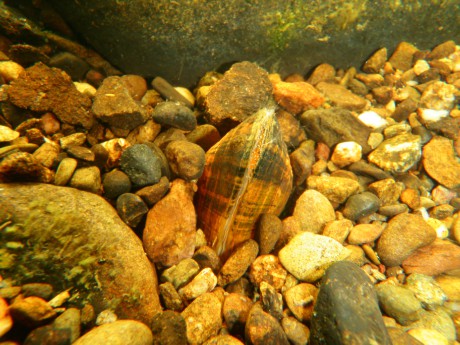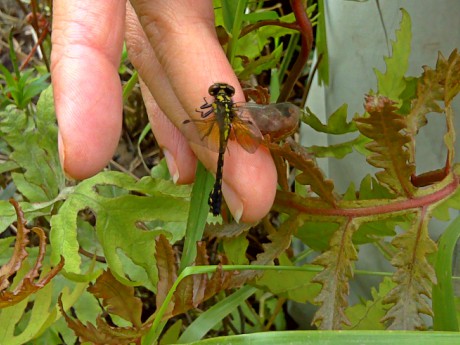Wood Turtle
In partnership with Environment Canada’s Canadian Wildlife Service and the New Brunswick Department of Energy and Resource Development, the Miramichi River Environmental Assessment Committee (MREAC) staff, partners, and volunteers have assessed Wood turtle (Glyptemys insculpta) presence/absence and their habitat on the major Miramichi River tributaries. When encountered a specimen is photographed and its location recorded; data is then shared with these jurisdictional agencies. MREAC annually acquires the necessary research permit from New Brunswick and observes the strict protocol to engage with Wood turtle specimens as little as necessary. We acknowledge support from Environment Canada’s Habitat Stewardship Program and the New Brunswick Wildlife Trust Fund.

Brook Floater
The Brook Floater (Alasmidonta varicosa) is considered to be a species at risk and listed as a “Species of Special Concern” by the Committee on the Status of Endangered Wildlife in Canada (COSEWIC). MREAC staff and volunteers have been involved in a number of projects related to the Brook Floater. The projects include habitat assessment and stewardship as well as water sampling for e-DNA analysis. To date three Miramichi River tributaries have produced live specimens of this mollusk. MREAC has also trained other watershed groups and the New Brunswick Community College (NBCC – Miramichi) Environmental Technology students on how to identify the Brook Floater.

Pygmy Snaketail
A river reach of the Southwest Miramichi River provides habitat for the Pygmy Snaketail (Ophiogomphus howei) dragonfly. This Odonate is considered to be a species at risk and listed as a “Species of Special Concern” by the Committee on the Status of Endangered Wildlife in Canada (COSEWIC). MREAC staff and volunteers have engaged in fieldwork that involved in the collection of exuviae that was then sent to Dr. Wendy Monk at the University of New Brunswick (UNB) for identification. Visual observation was also used in order to confirm presence or absence of this species during the emergence period.




